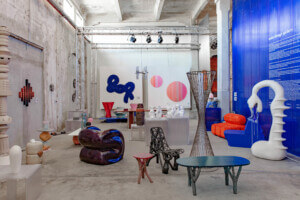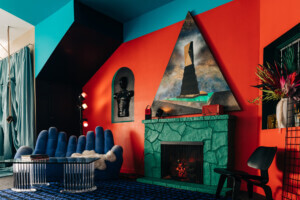Over the past two decades, a new type of design has taken shape. The contemporary collectible design market has combined the vintage market’s tradition of connoisseurship and the art world’s commercial structure with the experimental fervor of the early postmodern and studio craft movements. A select group of galleries, fairs, and museums and a growing collector base have tapped into the potential of collectible design, initially as an extension of fine art but increasingly as a domain that stands on its own.
Unlike standard product design, this type of output is characterized by artistic expression and limited production. Mass appeal and salability are not as important. Rather, individual designers are given free rein to conceive new one-off pieces that express their own personalities and outlooks. Often their works push the boundaries of material, form, function, and aesthetics.
As contemporary collectible design becomes more established, it’s gaining wider cultural influence. This transformation has brought with it a whole host of new complexities, both advantageous and challenging. To paint a full picture, AN Interior’s editor Adrian Madlener spoke to four industry experts.
“A lot has changed in the past two decades,” Friedman Benda gallery associate director Alex Gilbert said. “There’s been more of a crossover. Artists are conceiving design and designers are being formally recognized by the art world, which reinvigorates itself by dabbling in design. Both sectors are expanding and so one can conjecture that the two would converge at some point.”
“There’s no question that the collectible design market is modeled on the art market,” historian, journalist, educator, and adviser Daniella Ohad said. “What changed in the past two decades is that art collectors realized that they could have the best paintings, but if they didn’t have furniture to complement them, their homes would be impersonal.”
“Most design collectors are also art collectors,” Gilbert added. “However, the notion of buying for investment is still not quite as present in the design market. A majority of what is acquired is still based on necessity. Whereas it would seem normal for an art collector to amass paintings, it wouldn’t make sense for a design collector to buy three coffee tables if they only needed one.”
“The market emerged out of the auction houses,” Ohad said. “In the early 2000s, Phillips dedicated some of its decorative arts programming to renowned designers like Ron Arad and Marc Newson. With the economic crash of 2008, the market shifted to independent galleries and the annual fairs that began to bring them together. But before that, there was a strong emphasis on vintage or secondhand design and in particular midcentury modern pieces, which weren’t available for very long due to a limited supply. The market needed to search for work elsewhere and began focusing on living talents who were creating contemporary work.”
Read the full report and all four interviews on our interiors and design website, aninteriormag.com.











